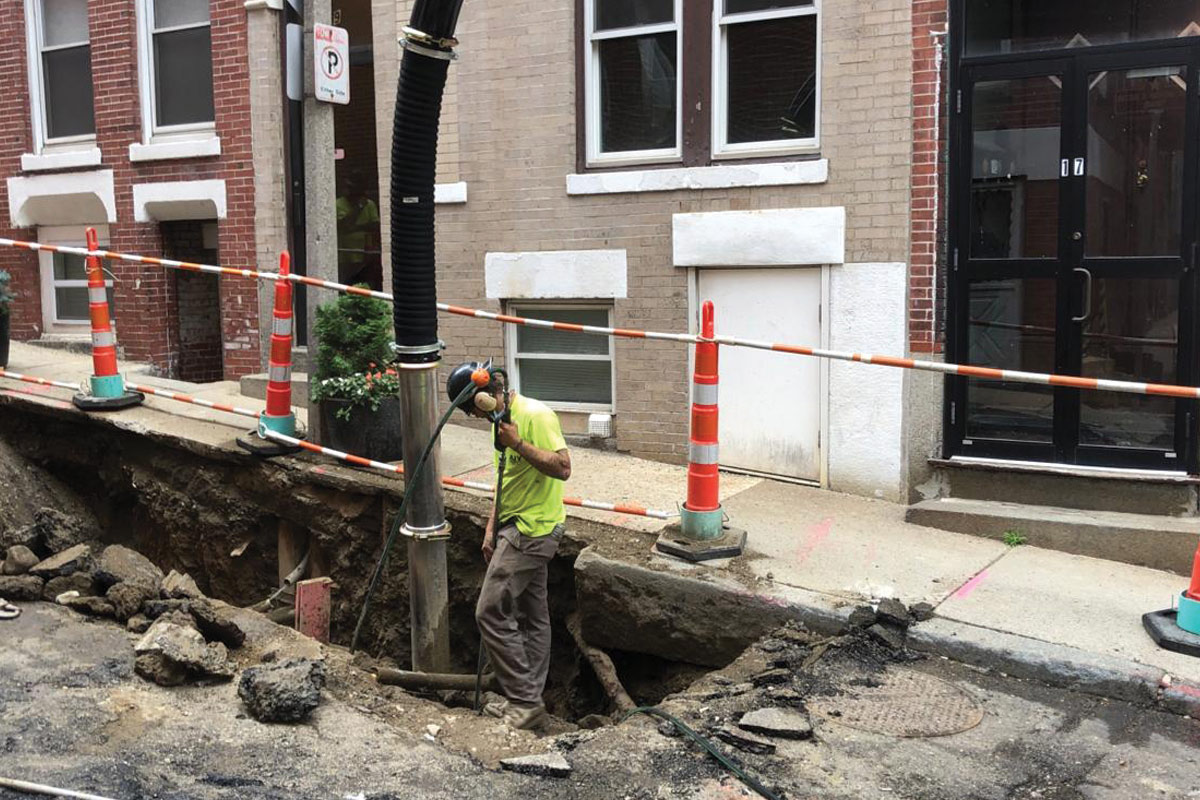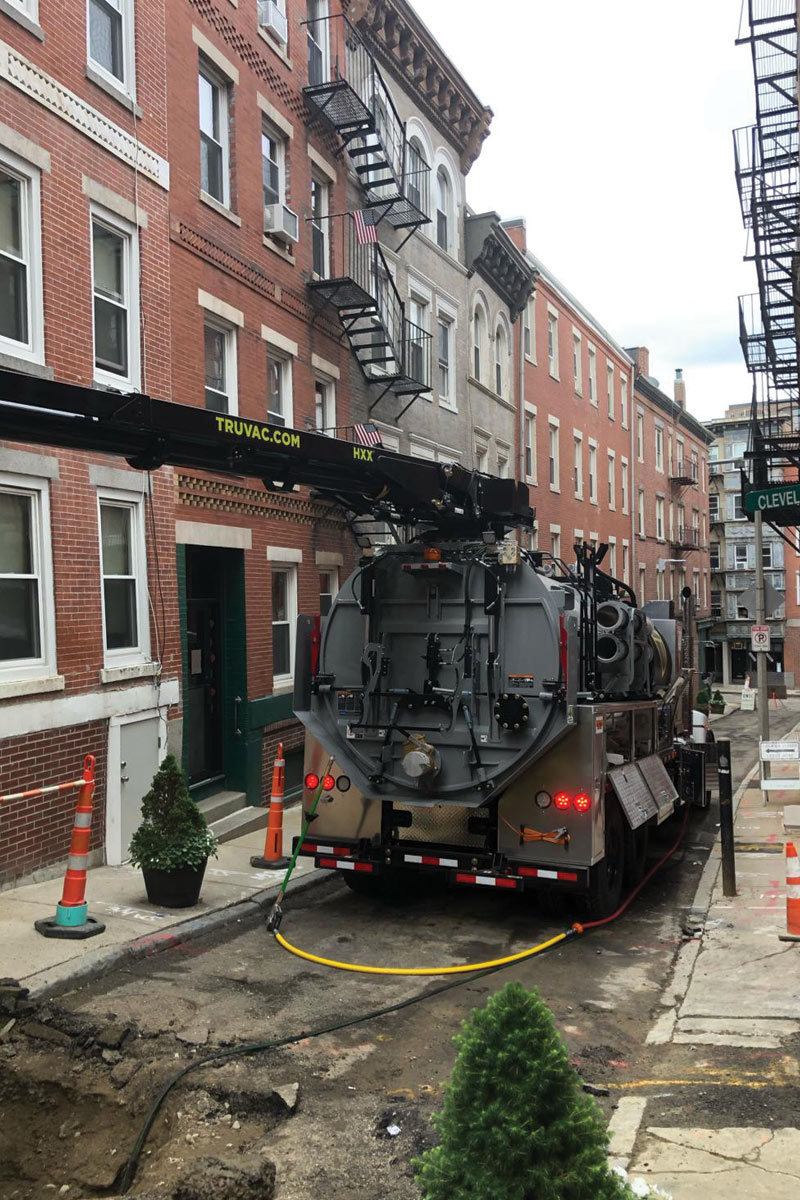
How to Safely Expose Utility Lines in Urban Projects Using Hydroexcavation
As the industry leader in safe-digging solutions, TRUVAC knows a thing or two about meeting the challenges of safe hydroexcavation in urban environments. Urban infrastructure projects often involve navigating a complex web of underground utilities, including gas lines, water mains, electrical cables, and telecom systems. Traditional excavation methods can pose significant risks, leading to costly repairs, project delays, and safety hazards. Hydroexcavation offers a safer, more efficient alternative for exposing buried utilities in urban settings.

Understanding Hydroexcavation
Hydroexcavation is a non-destructive excavation method that uses high-pressure water to break up soil, which is then removed by a powerful vacuum system. This technique allows for precise digging without physical contact with existing utilities, significantly reducing the risk of damage.
Benefits of Hydroexcavation in Urban Environments
Avoiding Utility Damage: The precision of hydroexcavation ensures that underground utilities are exposed without harm, preventing service interruptions and expensive repairs.
Minimizing Disruption: Hydroexcavation is less invasive than traditional digging methods, maintaining the integrity of surrounding areas and minimizing disturbances to traffic and local businesses.
Enhancing Safety: By reducing the risk of utility strikes and associated hazards, hydroexcavation enhances safety for both workers and the public.
Implementing Hydroexcavation: A Step-by-Step Guide
Conduct a Site Assessment: Begin by reviewing utility maps and employing ground-penetrating radar to accurately locate all underground utilities within the project area.
Set Up Hydroexcavation Equipment: Position the hydroexcavation unit, which includes a high-pressure water system and a vacuum apparatus, ensuring it is safely situated to access the excavation site without obstructing urban traffic or pedestrian pathways.
Initiate the Excavation Process:
Apply a controlled stream of high-pressure water to the designated excavation area to loosen the soil.
Simultaneously, use the vacuum system to remove the slurry of water and soil, effectively clearing the area around the utility lines.
Maintain Precision and Control: Adjust water pressure and vacuum settings as needed to accommodate varying soil types and depths, ensuring careful exposure of utilities without causing damage.
Manage Excavated Material: Collect the displaced soil and water mixture into the hydroexcavation unit’s holding tank for appropriate disposal or recycling, adhering to local environmental regulations.
Inspect and Document: Once utilities are exposed, conduct a thorough inspection to assess their condition. Document the findings with photographs and detailed notes for project records and future reference.
Overcoming Urban Excavation Challenges with Hydroexcavation
Urban projects often face challenges such as limited space, high traffic volumes, and proximity to businesses and residences. Hydroexcavation addresses these issues by utilizing compact equipment capable of operating in confined spaces without causing significant disruptions. Its efficiency allows for quicker project completion, reducing the impact on the surrounding community.
Case Study: Successful Application of Hydroexcavation
In a recent urban infrastructure project, a city required the replacement of an aging water main beneath a busy street. Traditional excavation posed risks to the dense network of underground utilities. By employing hydroexcavation, the project team safely exposed the utility lines without causing damage or service interruptions. The project was completed on time and within budget, demonstrating hydroexcavation’s effectiveness in urban settings.
Conclusion
Hydroexcavation stands out as a superior method for safely exposing utility lines in urban projects. Its precision, efficiency, and minimal environmental impact make it an invaluable tool for contractors and municipalities aiming to maintain and upgrade urban infrastructure without compromising safety or disrupting community life. By integrating hydroexcavation into urban excavation practices, project teams can achieve safer and more efficient outcomes. TRUVAC specializes in hydroexcavators, with models for any size job, and its extensive dealer network means TRUVAC equipment is available near you. Visit TRUVAC.com to learn more.




